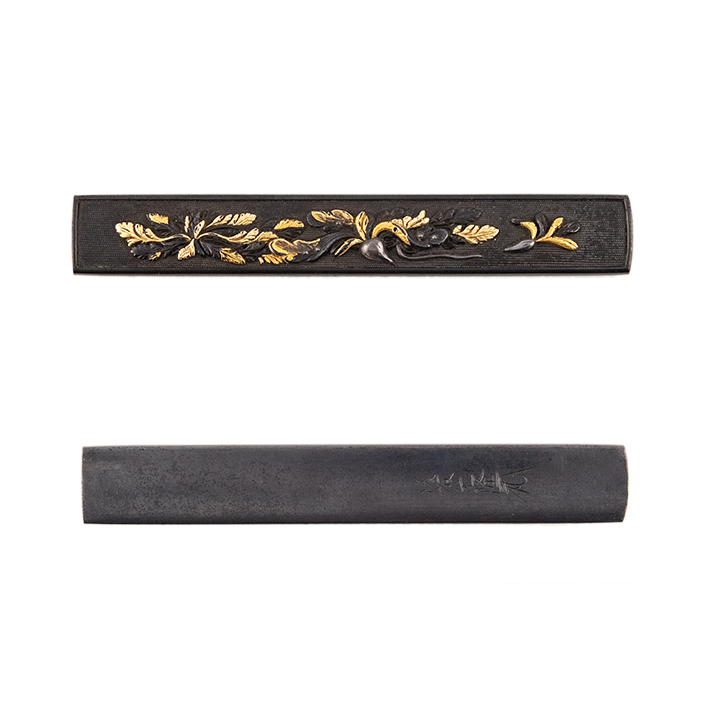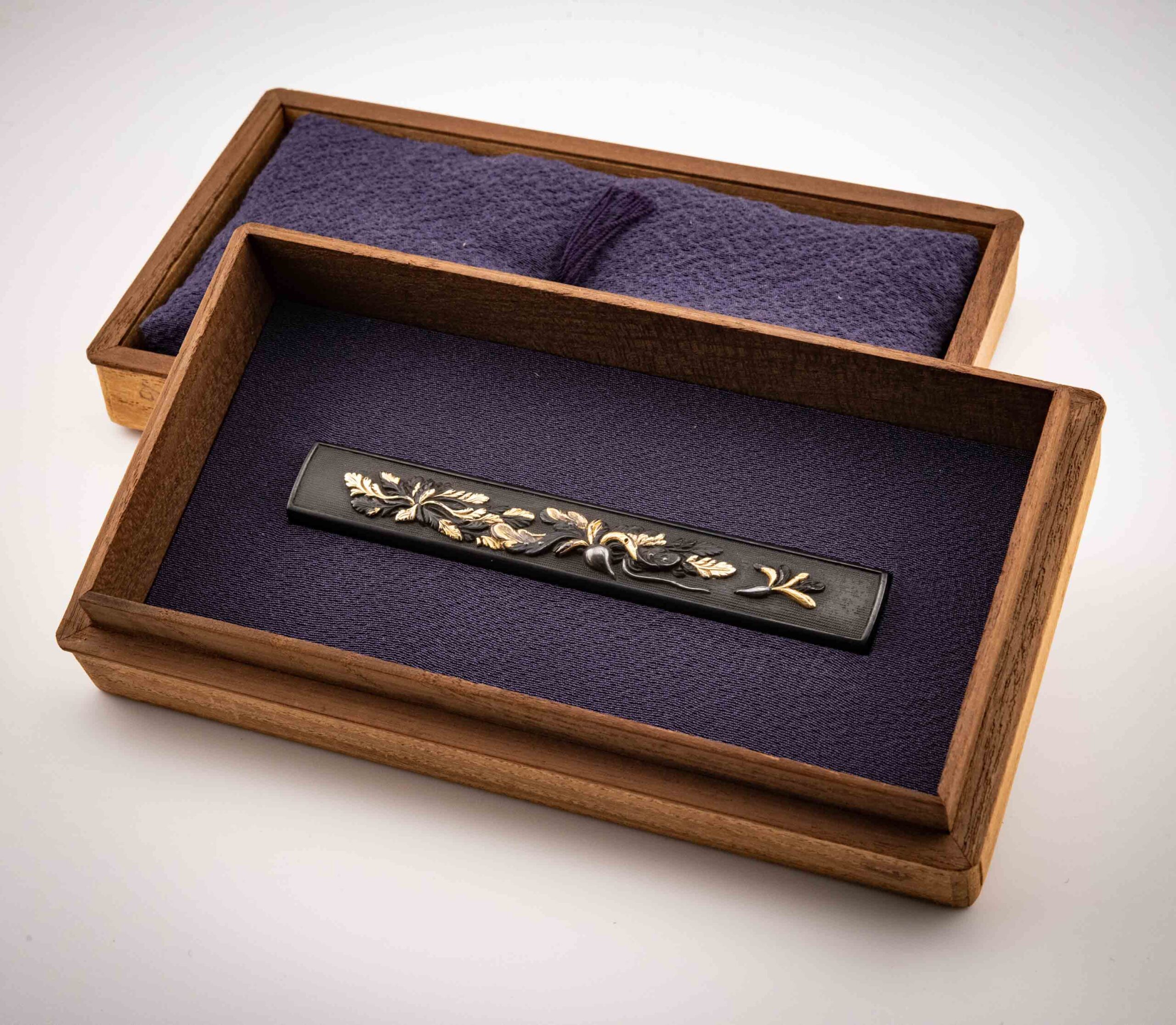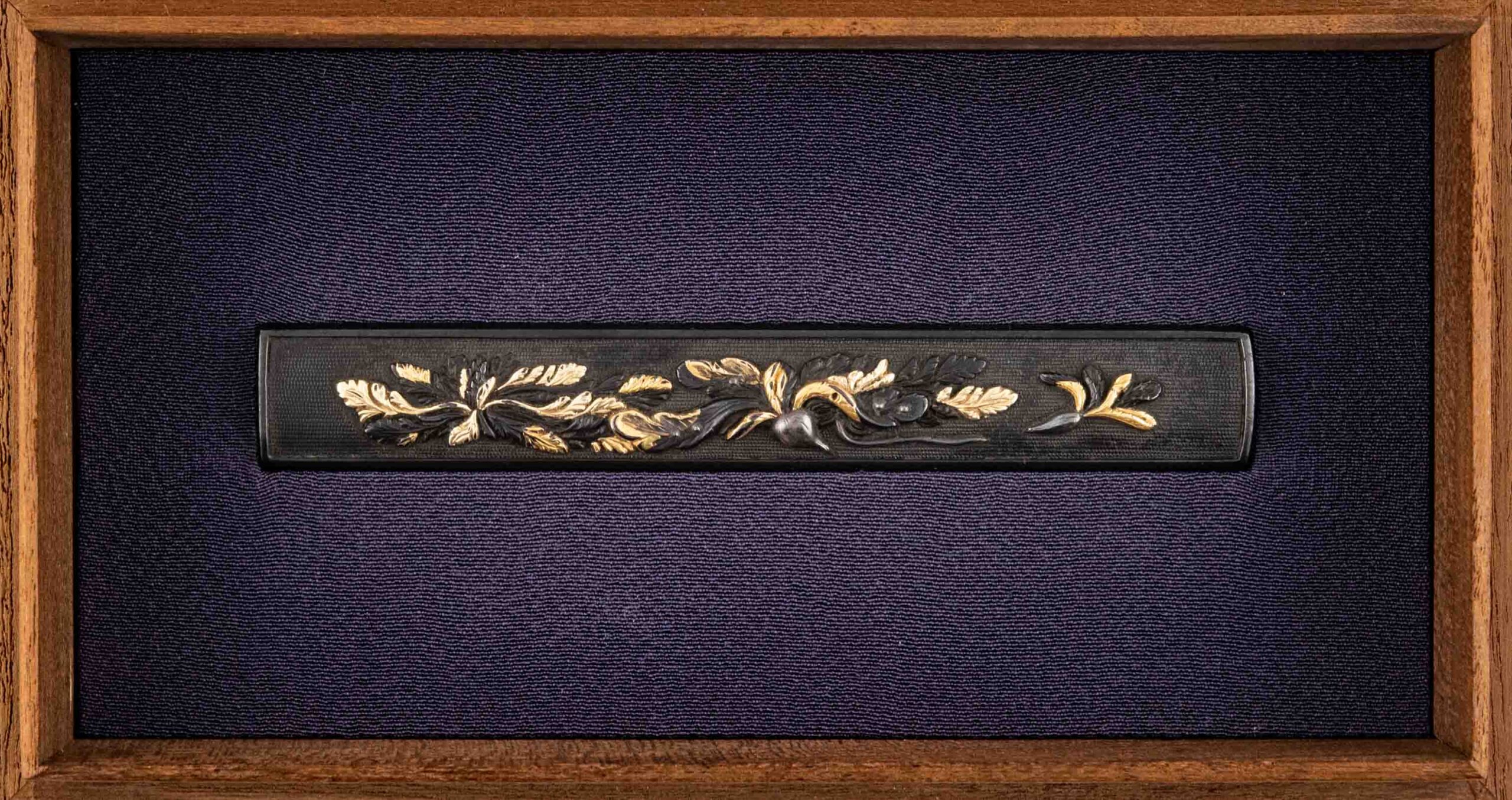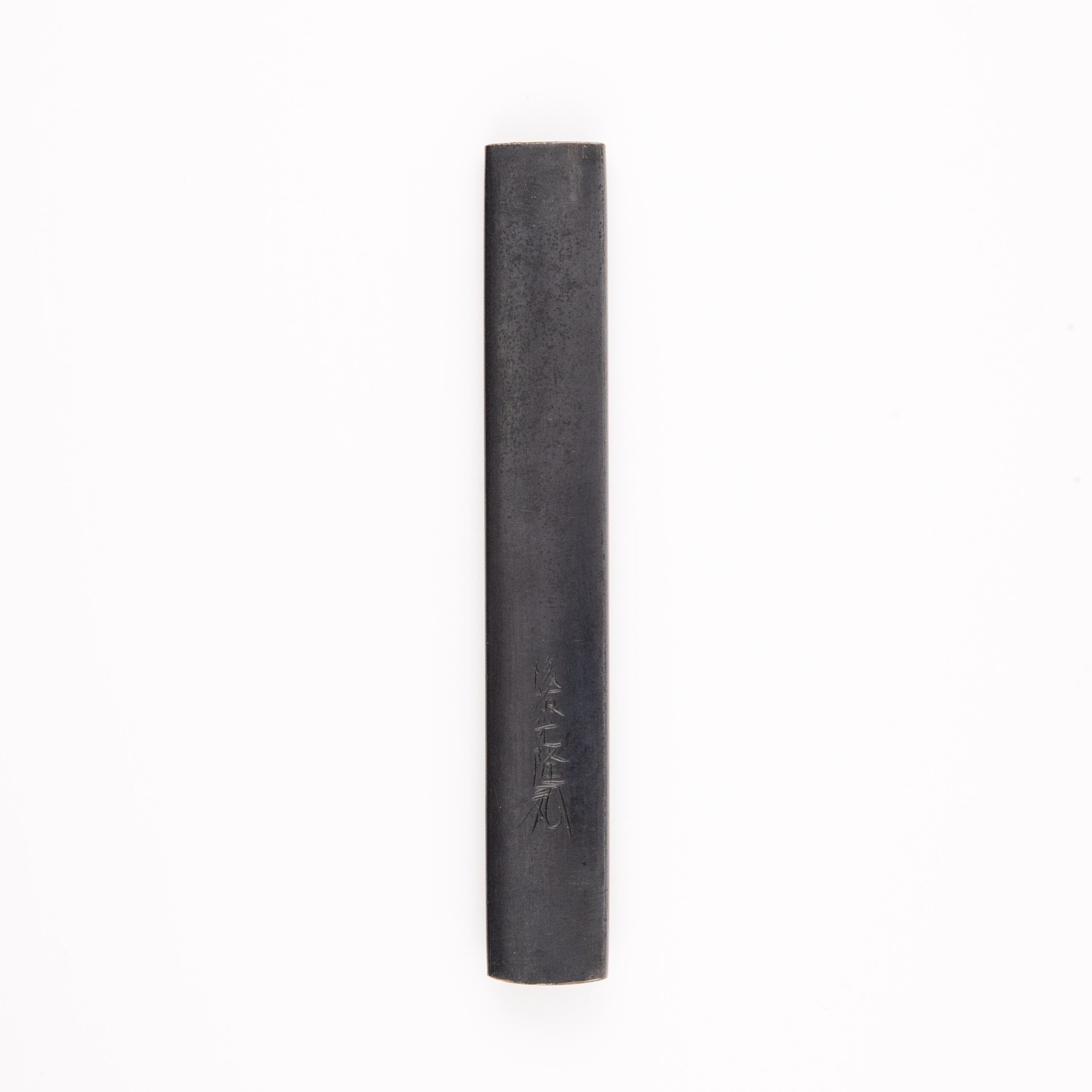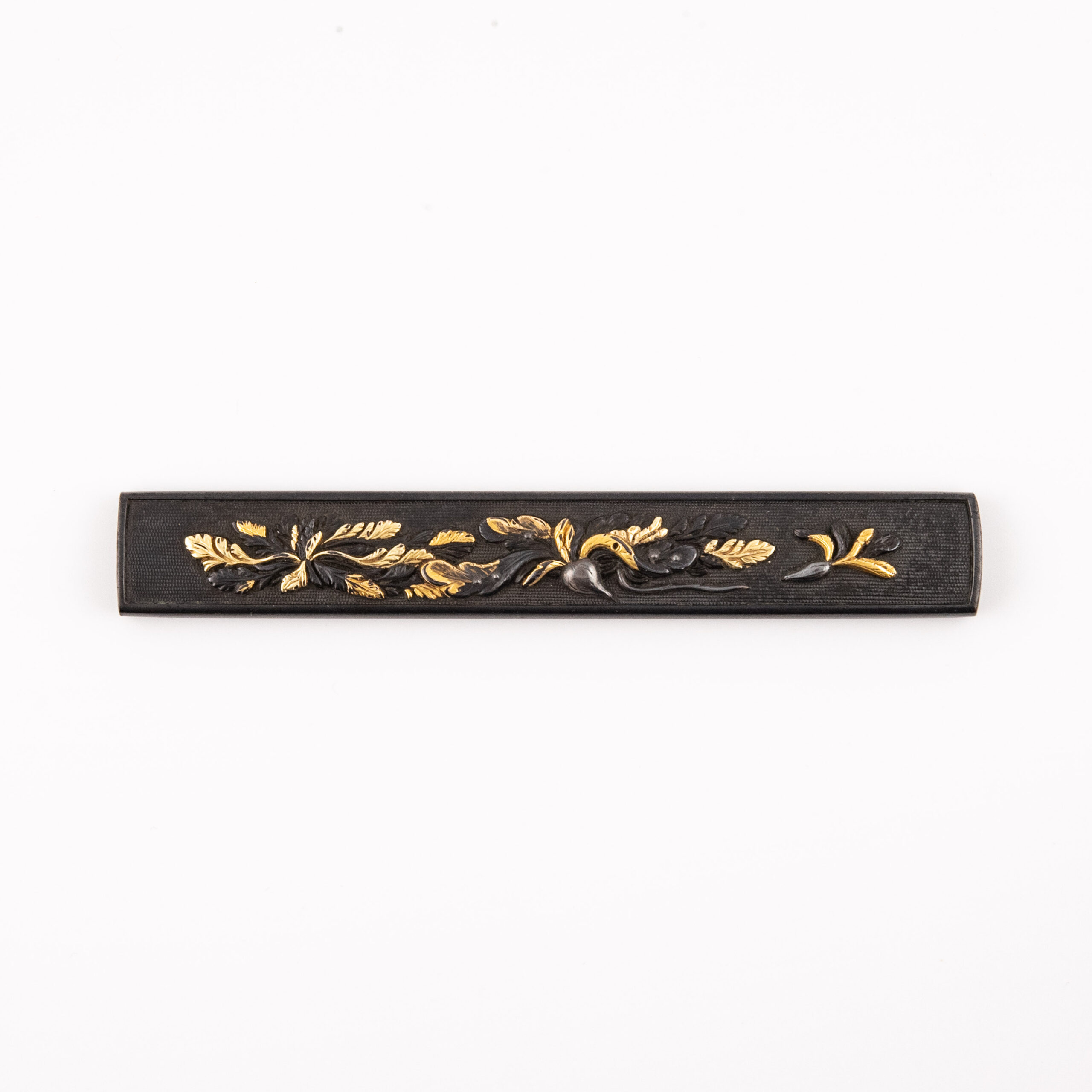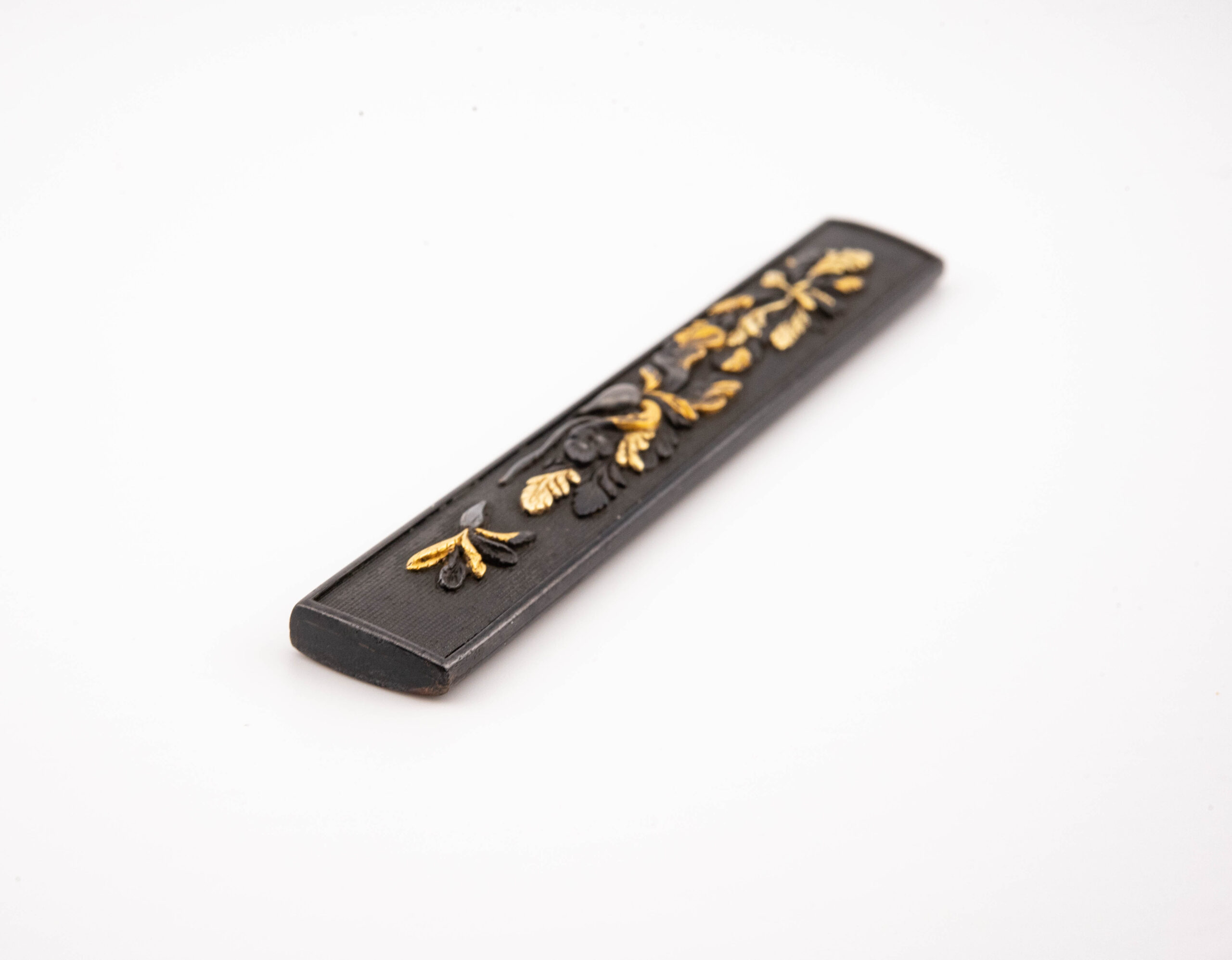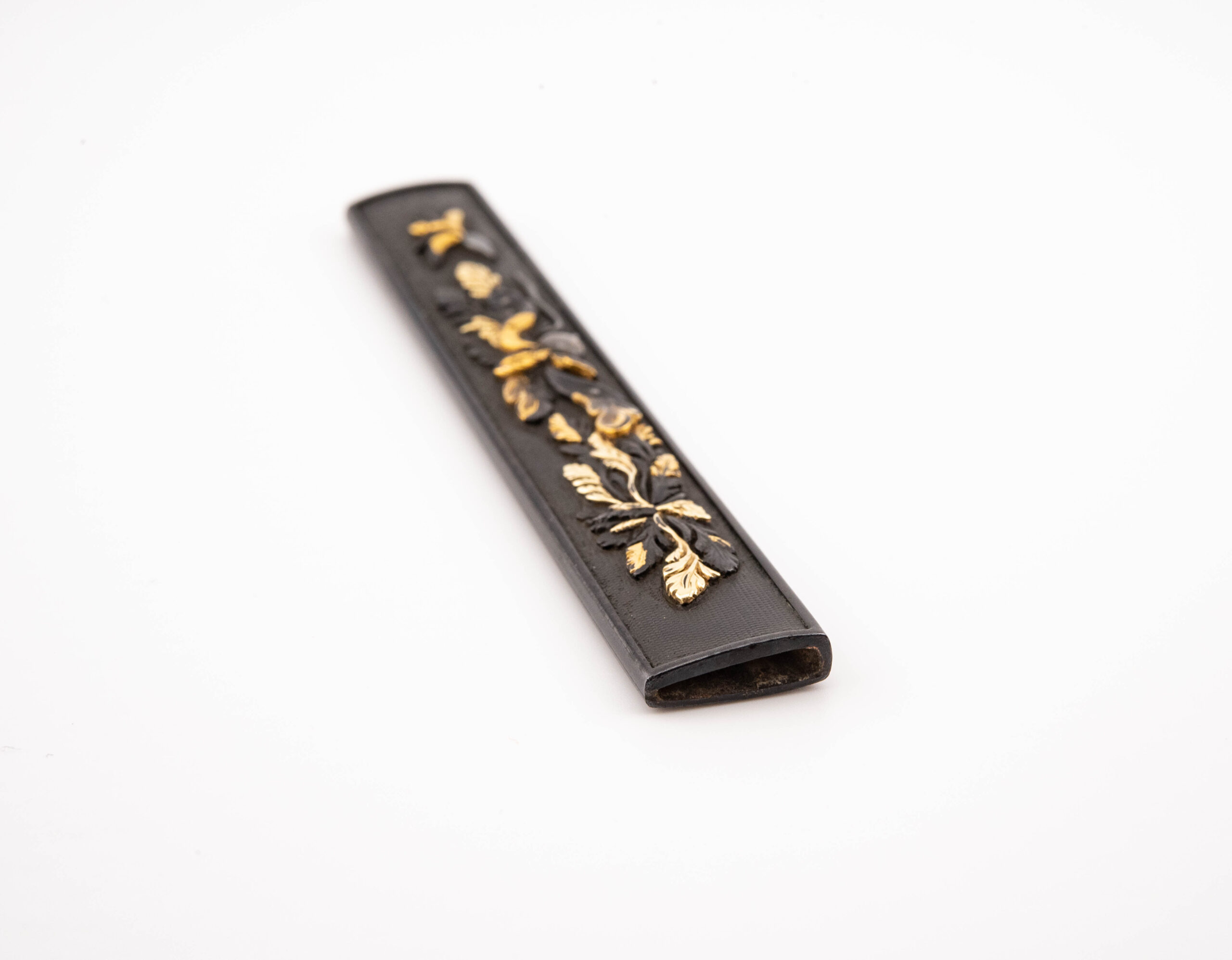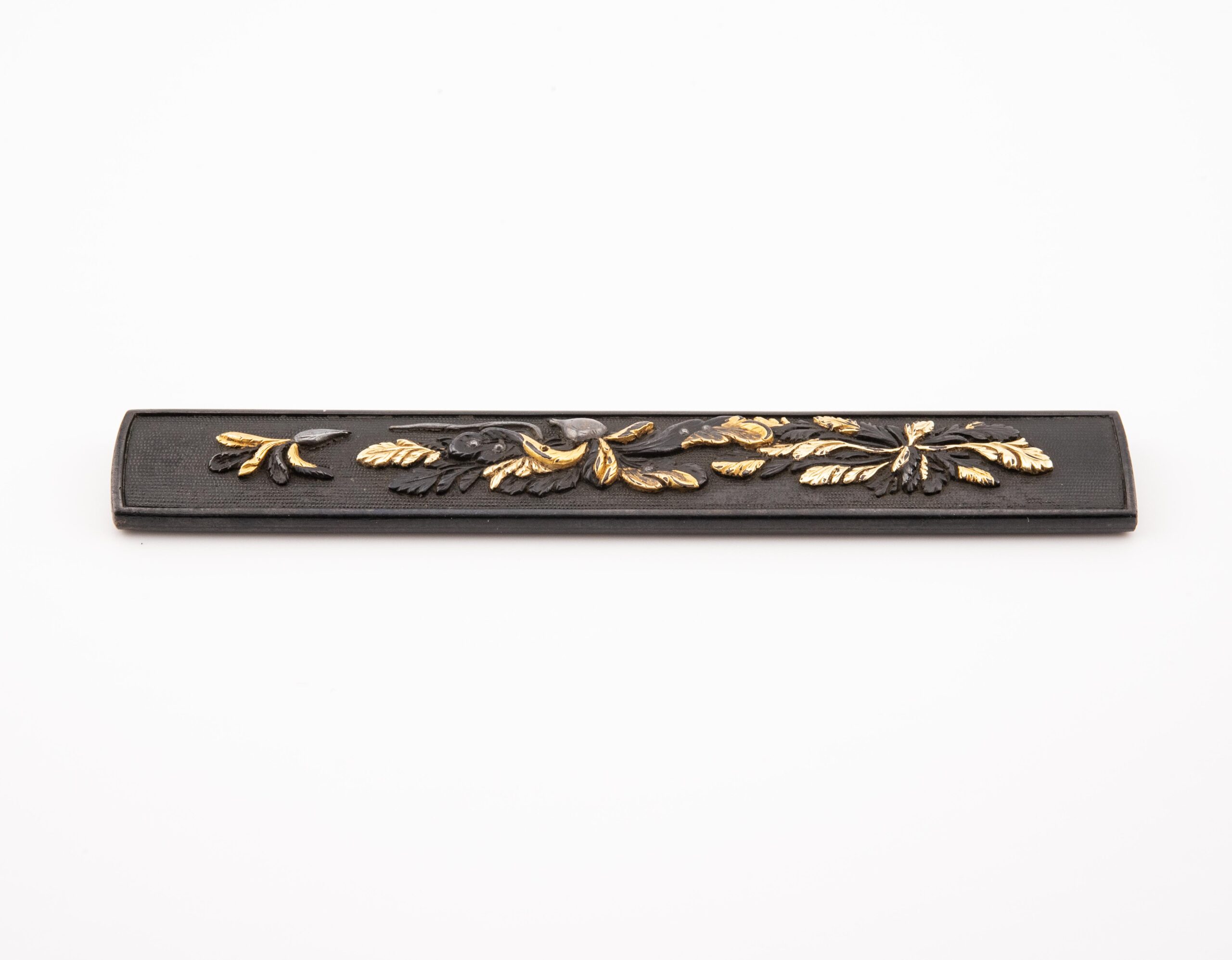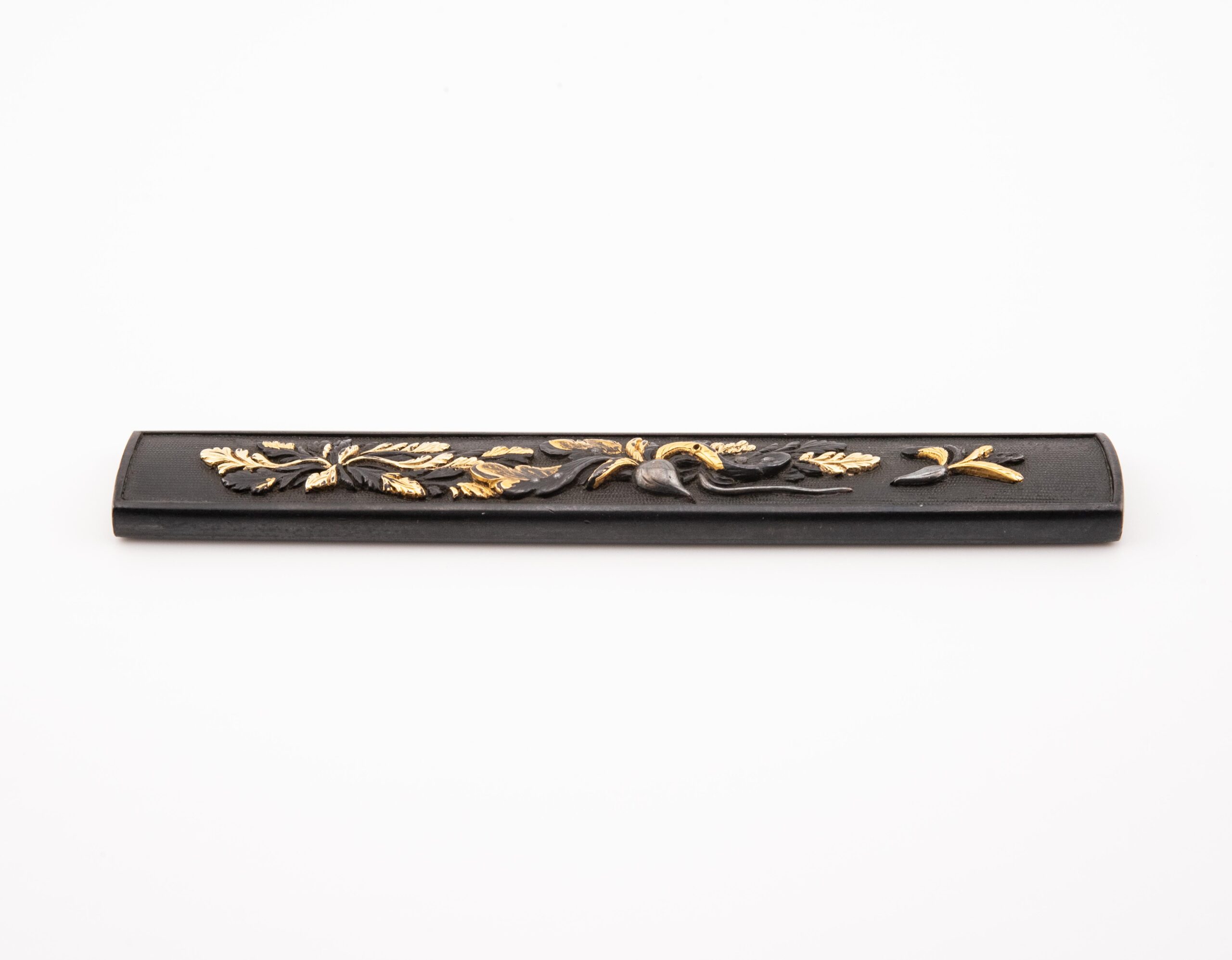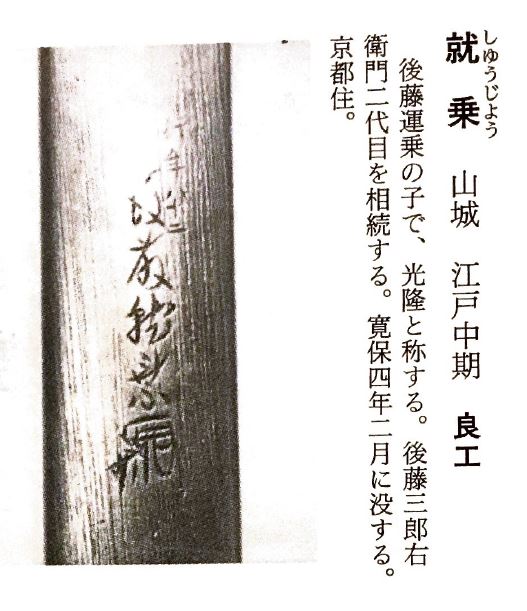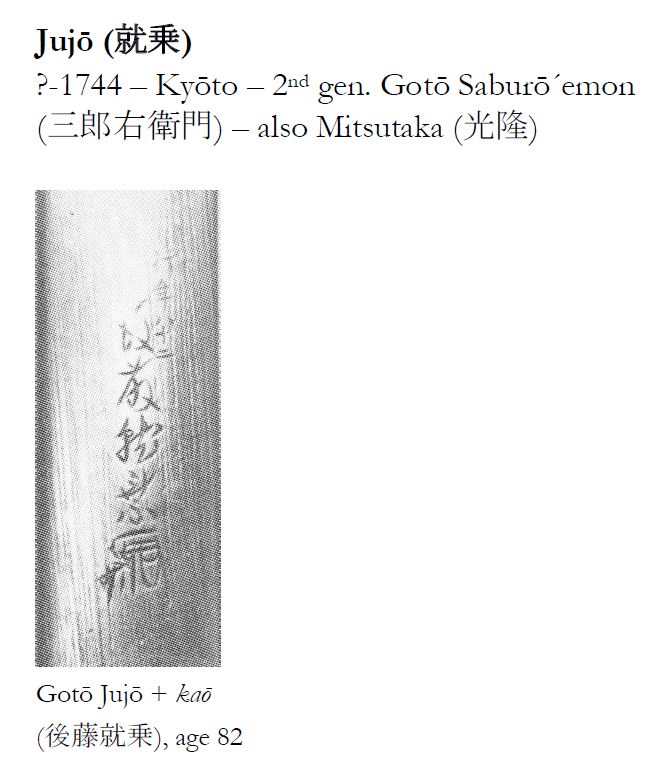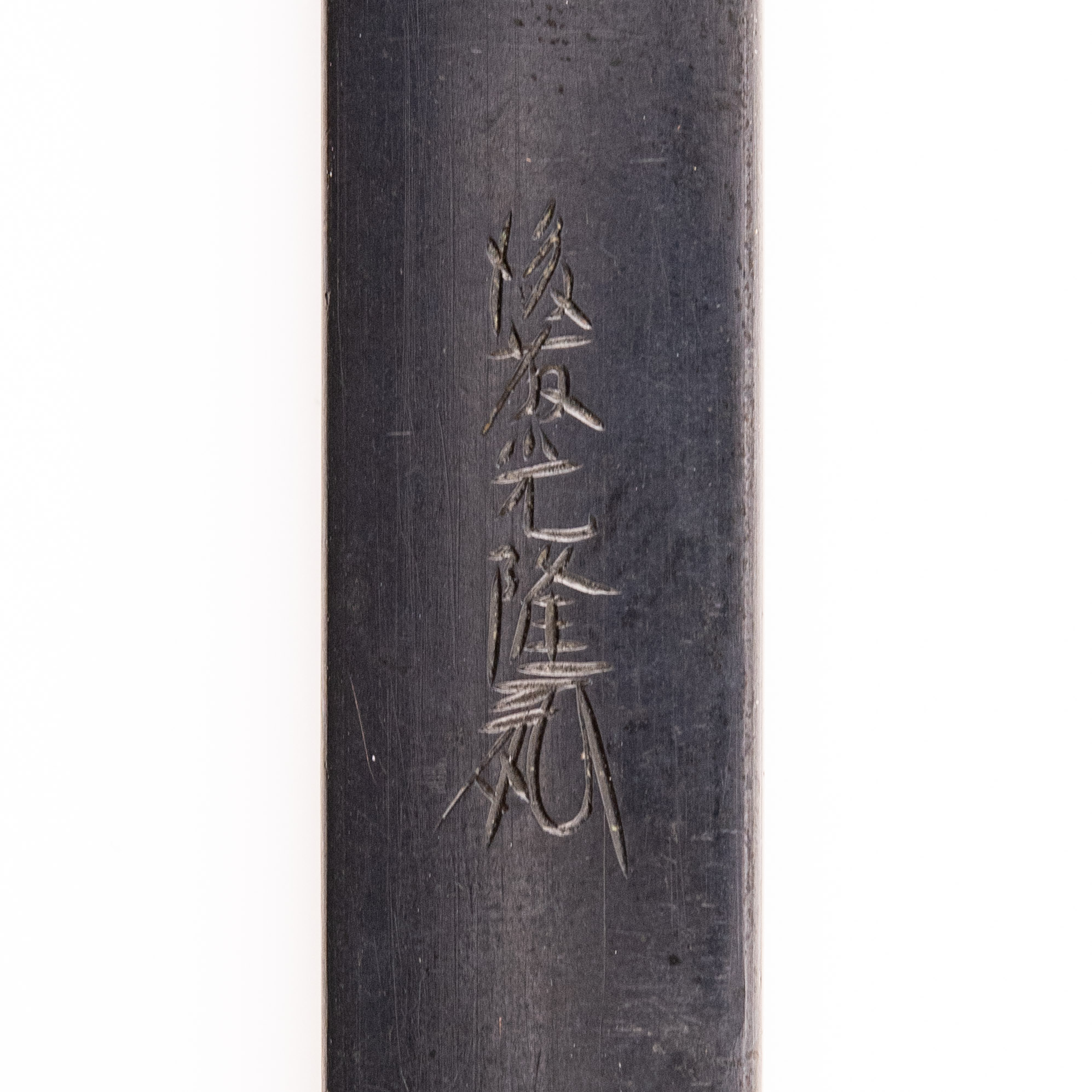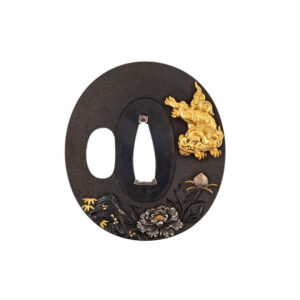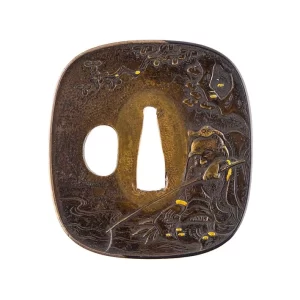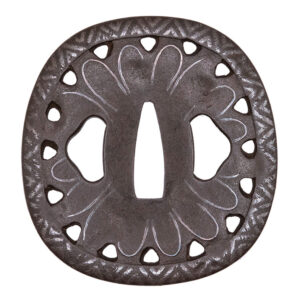This Kozuka was made by the Waki Goto master Jujo (aka Mitsutaka) who was active in the early to late Edo period. Sesko states that he died in 1744 and still signed at the age of 82 which puts his birthday somewhere around 1660 which means he worked at the same time as the eleventh mainline master Goto Tsujo. He was the second master of the Waki Goto Saburoemon school which was started by his father Goto Kyujo who himself was the fifth son of Goto Tokujo (fifth mainline master of the Goto school). It is interesting to see how much details of his life are actually known so we will quote from the Haynes index here:
His first son was adopted by the Mitsui trading family. His second son was of the Goto Kyujo line. His third son married into another family and took their name. He had several daughters who died young. His wife, Miki, was the daughter of Goto Kaijo, and she died Aug. 17, 1738. He is said to have been the teacher of Yamazaki Ichiga.
It is to be noted that the Meikan gives the reading of his name as ‘Shuujo’ while Haynes and Sesko both write ‘Jujo’.
Signed works by Waki Goto masters and ‘Jishin Mei’ works in particular are much rarer than signed works by the mainline school. The reason for this is the so called practice of lifting, which describes the process of taking a Waki Goto Kozuka made in Shakudo, giving it a gold foil wrapping and re-attributing it to a mainline work. This practice was common procedure in the Goto school in the Edo period as demand for items from the main school was quite high and the quality of the Waki school masters was often similar to that of the main school.
The Kozuka shows vegetables, probably ‘Daikon’ (horse radish), and other plants which are generally subsumed as ‘Shunso’ (spring grass). The application of gold and silver was performed by ‘Kinkise’ an application of a thin foil on top of the Shakudo motif. Given the old age (over 300 years) of this Kozuka, the gold foil has become quite thin at the heights of the relief so that the Shakudo below is showing. A feature we often see on old Goto works.
This piece is attributed to Goto Mitsutaka by the NBTHK Hozon certificate.
Comes with a custom made Kiri box.

